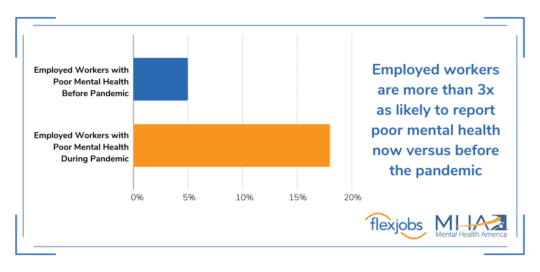OSHA Recommendations to Control COVID-19 in the Workplace
January 26, 2021 / 4 mins read

While the business world has adjusted to fully remote workforces, many companies and employees have experienced its cost. An August survey by Flex Jobs and Mental Health America showed 40% of workers experienced burnout during the pandemic. While the causes for this varied, one reason identified is the difficulty some employees had in maintaining a work/life balance without separate physical spaces for each.

Transitioning Back From Fully Remote Workforces
With vaccinations kicking into gear, there is now light at the end of the tunnel to start planning a return to full or hybrid office environments. To that end, OSHA provided a set of recommendations on workplace ventilation to ensure your commercial office space is safe to return for employees, in concert with increasing vaccinations.
OSHA Workplace Ventilation Recommendations
In November 2020, OSHA issued recommendations on reducing COVID-19 transmission in the workplace. These OSHA recommendations are to:
- Encourage workers to stay home if they are sick.
- Ensure all HVAC systems are fully functional, especially those shut down or operating at reduced capacity during the pandemic.
- Remove or redirect personal fans to prevent blowing air from one worker to another.
- Use HVAC system filters with a Minimum Efficiency Reporting Value (MERV) rating of 13 or higher, where feasible.
- Increase the HVAC system’s outdoor air intake. Open windows or other sources of fresh air where possible.
- Be sure exhaust air is not pulled back into the building from HVAC air intakes or open windows.
- Consider using portable high-efficiency particulate air (HEPA) fan/filtration systems to increase clean air, especially in higher-risk areas.
- When changing filters, wear appropriate personal protective equipment. ASHRAE recommends N95 respirators, eye protection (safety glasses, goggles, or face shields), and disposable gloves.
- Make sure exhaust fans in restrooms are fully functional, operating at maximum capacity, and are set to remain on.
- Encourage workers to report any safety and health concerns.
Further Guidance
On January 21, 2021, President Biden issued an executive order on Worker Health and Safety, which included the below statement:
(c) review the enforcement efforts of the Occupational Safety and Health Administration (OSHA) related to COVID-19 and identify any short-, medium-, and long-term changes that could be made to better protect workers and ensure equity in enforcement;
(d) launch a national program to focus OSHA enforcement efforts related to COVID-19 on violations that put the largest number of workers at serious risk or are contrary to anti-retaliation principles;
In the interim, scientists have been advocating for the CDC to set indoor air standards, Mintropy will be monitoring this to see if it results in any code changes for certain facilities.
Mintropy COVID-19 HVAC Checklist
To stay ahead of any changes, we developed our own checklist for you to evaluate your HVAC and workplace ventilation risk control. We created a checklist to compare your compliance with ASHRAE 62.1 against a grading system to verify the robustness of your mitigation measures.
Please contact us to receive our COVID-19 HVAC Checklist or to discuss any other improvements to your HVAC systems.
Need help with your project? Let’s get in touch!
Lorem ipsum dolor sit amet, consectetuer adipiscing elit.

